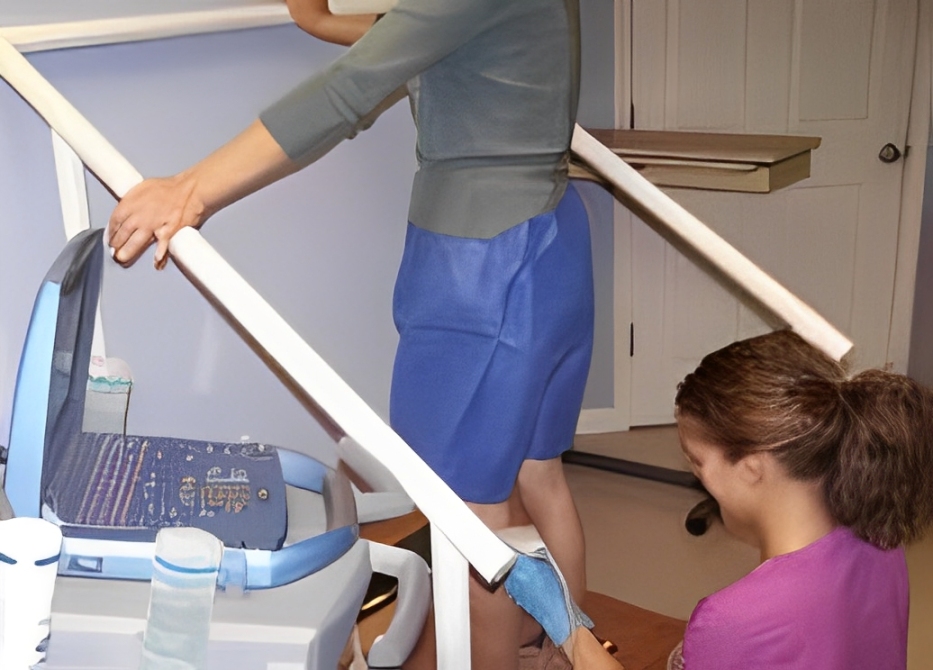Find Vein Problems Noninvasively
The human body is designed as a collection of networks that function in tandem to keep an individual healthy and thriving. Amongst these networks is the circulatory system which depends on veins and blood vessels to move blood back and forth between the heart and the rest of the body. Those veins that sit deeper within the body also depend on one-way valves in an effort to keep blood moving against gravity and back up towards the heart from the extremities.

When valves are functioning properly, veins have no trouble doing their job. However, when valves malfunction, veins face problems that can lead to more serious medical concerns for the individual. When a fault valve allows blood to flow in the opposite direction, it follows gravity and naturally begins to pool in the lower extremities. As blood pools, it puts pressure and strain on veins and ultimately, can lead to the development of varicose veins over time.
While varicose veins and other venous insufficiencies are troublesome on an aesthetic level, they can also be accompanied by a series of symptoms that are unpleasant and even painful. Many patients suffering from varicose veins report symptoms associated with skin that’s warm or painful to the touch, excessive swelling in the area, discoloration, and limbs that feel heavy or tired.
Varicose veins can potentially lead to skin ulcers in the long-term and are often associated with the development of blood clots known as deep vein thrombosis. The dangers surrounding the development of these blood clots are serious, and in the event, they break loose, blood clots can lead to a pulmonary embolism, heart attack, or stroke. For all of these reasons and beyond, it’s important for patients who believe they may be susceptible to venous disease, or those with a history of varicose veins in their family be diagnosed by a professional. Today, patients who require these diagnostic services are faced with a variety of options that are not only accurate but painless, and amongst them is the Venous Doppler Ultrasound.
A Non-Invasive Diagnostic Approach
When it comes to diagnosing vein disease, it’s important that a physician be able to not only map out the veins and their overall efficiency but pinpoint those areas where veins may be strained or valves are not functioning properly. When this happens, a physician is able to then create a comprehensive and customized treatment plan that takes a patient’s individual vein mapping into account.
A venous Doppler Ultrasound allows a physician to accurately view the network of veins present throughout the human body which can help in identifying blood clots as well as specific causes related to swelling in the extremities. As the ultrasound transducer sends waves through the body, it captures and records images of the organs, tissues, and vessels. These images can, in turn, provide important information on narrowing vessels, the potential presence of tumors, clots, and blockages that may prove problematic. The speed of blood flowing through vessels can also be tracked utilizing this diagnostic method, helping a physician determine where valves may be faulty and certain areas of the body that are at risk for future venous issues.
What to Expect Following a Diagnosis
After careful review of the results of a Doppler Ultrasound exam, a physician will take time to put together a treatment plan specific to the patient. For those patients that are diagnosed with minimally severe cases of venous insufficiency, a physician will generally recommend the use of compression garments. These garments are available as socks and sleeves and not only help promote the healthy flow of blood throughout the body but can significantly reduce swelling in the extremities, particularly when used in combination with a healthy diet and exercise. Those patients facing more severe cases of venous insufficiency may need to look at other options. Where once upon a time painful vein stripping was the only real solution to severe vein conditions, patients now enjoy a wide variety of minimally invasive treatment options. Some patients may be referred to laser ablation where laser energy is used to seal and collapse problematic veins, allowing the body to simply reabsorb them over time. Other patients may be treated with sclerotherapy which collapses and seals problematic veins using an injection of sclerosant. Both of these treatment routes require only the use of local anesthetic, which can be performed as outpatient procedures and come with short recovery periods and highly successful results.
Schedule a Consultation Today
There’s no reason to wait when you’re looking to keep up with overall vein health. At the St. Louis Laser Vein Center, we’re proud to offer a comprehensive approach to vein care and invite prospective patients to schedule an initial consultation with Dr. Wright. Contact us today to learn more about our many services available, venous Doppler Ultrasound cost, and how we might be able to assist you on your path to health, confidence, and change.
